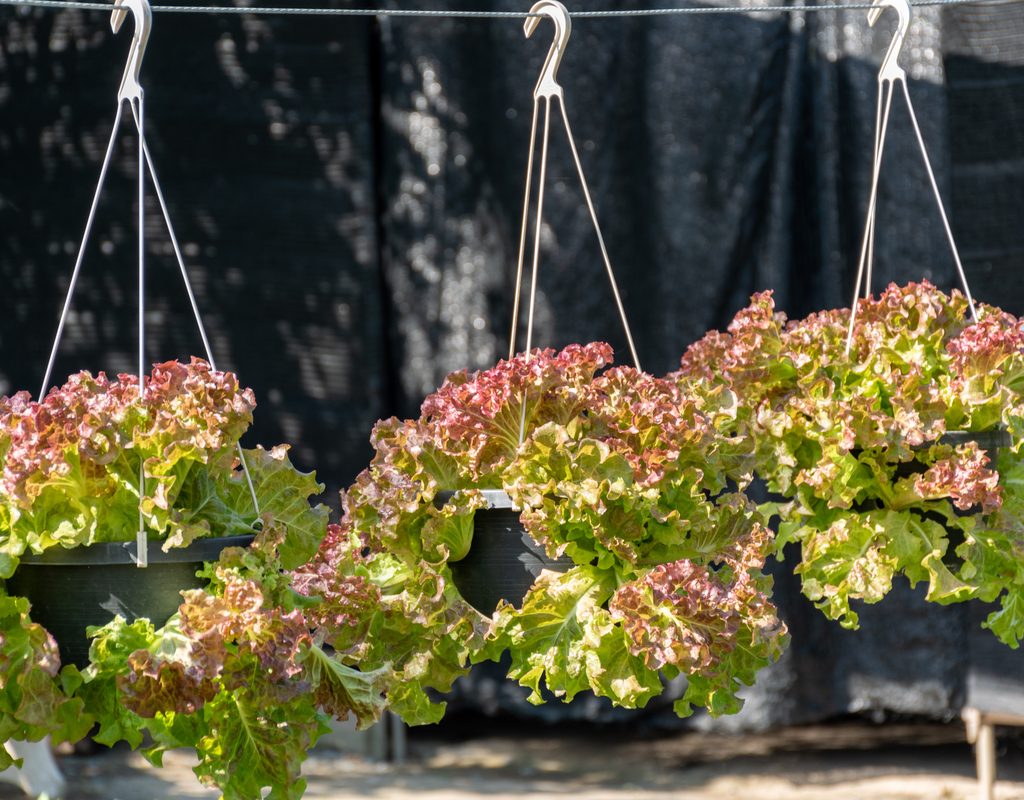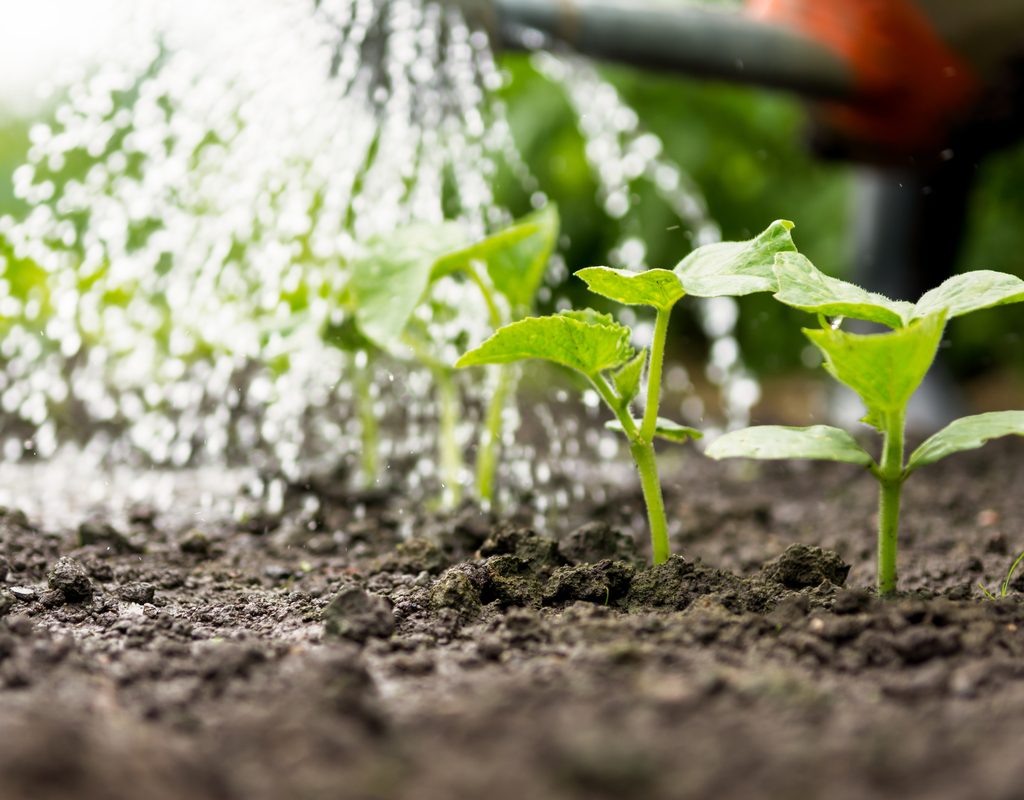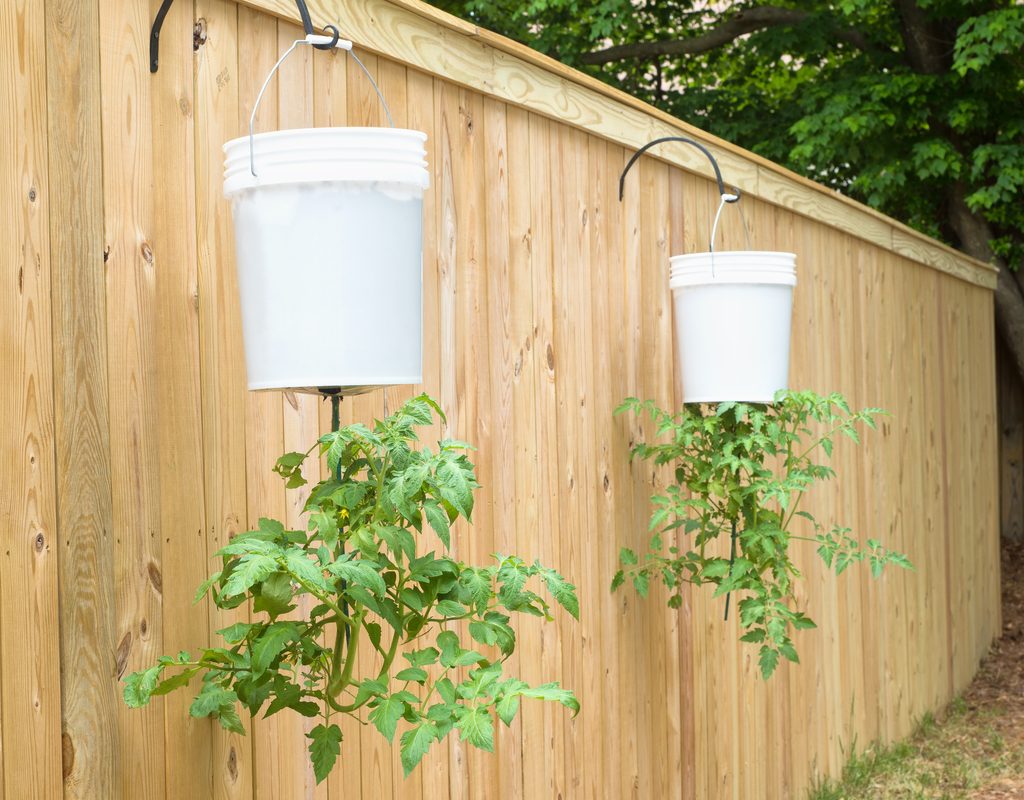Hanging gardens offer lots of flexibility and space savings for gardeners, especially when overall space is limited and for those with limited mobility. These vertical spaces work for vegetables, herbs, and fruits as well as trailing flowers and ornamentals. But, with all the hype around vertical gardens and hanging baskets, it’s easy to get lost in the aesthetic and forget functionality. Don’t sacrifice healthy plants for pretty pots. If you plan to grow a hanging vegetable garden, these ideas will help you create a beautiful, productive, safe, and easy-to-use system.

Avoid space hogs
Not every edible is suitable for hanging gardens. Some, like sweet corn, require too much space. Others, like carrots, offer little return for a fairly lengthy growing season. The best edibles for hanging gardens are those that make the most out of a small growing space. They don’t require lots of space, and they produce over an extended period of time. Some have a trailing growth habit, while others grow upright but stay fairly low and bushy.
Choose plants that can hang
Tomatoes thrive in hanging baskets. Go for cultivars with smaller fruits like cherry tomatoes or plum tomatoes that are very productive and unlikely to need added support. Likewise, bush-type cucumbers make a great choice for hanging gardens because of their high productivity and space savings. Everbearing strawberries produce well throughout the growing season and thrive in containers. Other excellent choices for this type of garden include peas, lettuce, and other small greens, and most culinary herbs.
Don’t let your baskets dry out
One of the biggest challenges with hanging basket gardens is the ability to maintain a moist root system. In the heat of summer, hanging baskets can dry out quickly, which stresses plants. Avoid drought stress and dead plants by choosing the right container sizes and materials, and filling them with the right potting mix.
Use large containers
Tomatoes and cucumbers need 18-inch containers. Small greens and herbs need 12-inch containers. The soil volume in these pots holds enough water to keep the plants hydrated through a hot summer day. At first, a small seedling in a large pot may look silly, but by mid summer the plants will be robust and well watered. Planters with multiple side pockets, like traditional strawberry pots, make efficient use of vertical space as they use deeper soil volume to host additional plants, but water may drain unevenly through the pot. If you choose this style of container, pay close attention to the wet and dry zones and adjust watering accordingly.

Manage soil moisture
Use only high-quality container soil that resists compaction, absorbs moisture readily, and drains excess water. Avoid potting mixes with high percentages of composted forest products and sand. You can make your own container mix, using equal parts long-fiber peat moss, vermicompost, perlite, and vermiculite. Add slow-release fertilizer for a steady feeding program that will keep plants well nourished.
Other ways to avoid dry baskets include the use of basket liners and mulch. Hanging baskets with coco fiber liners dry out fast. Use a plastic basket liner to slow it down. A layer of organic mulch, like that you would use for in-ground garden beds, helps to insulate the soil surface and reduce evaporation.
Watch the weight
Large hanging baskets that are suitable for season-long veggie production are heavy. A well-watered tomato plant in an 18-inch plastic pot weighs 75 pounds or more. The weight of a hanging vegetable garden stresses the structure that supports it, the fasteners used to attach it, and the connectors that fasten the pot to the hanger. If any of these give way, it could lead to structural damage or personal injury.
Avoid earthenware, terracotta, and other heavy container materials. Plastic is an easy-to-use, lightweight, durable choice. Other lightweight hanging basket container materials include fabric, metal, and various natural fibers. Use hardware that is designed for the forces that will be applied: Ceiling hooks for direct overhead hanging, wall anchors for wall-mounted brackets, etc. Ceiling joists and wall studs are usually the strongest attachment locations.
Get creative
The best thing about gardening is that you can create a space that is uniquely yours. From the containers that you choose, to the support systems, to the plant selection, your garden will be unlike anyone else’s. Choose plants that will work within your space, make a plan to keep weight to a minimum and moisture levels consistent, and your garden will flourish.



